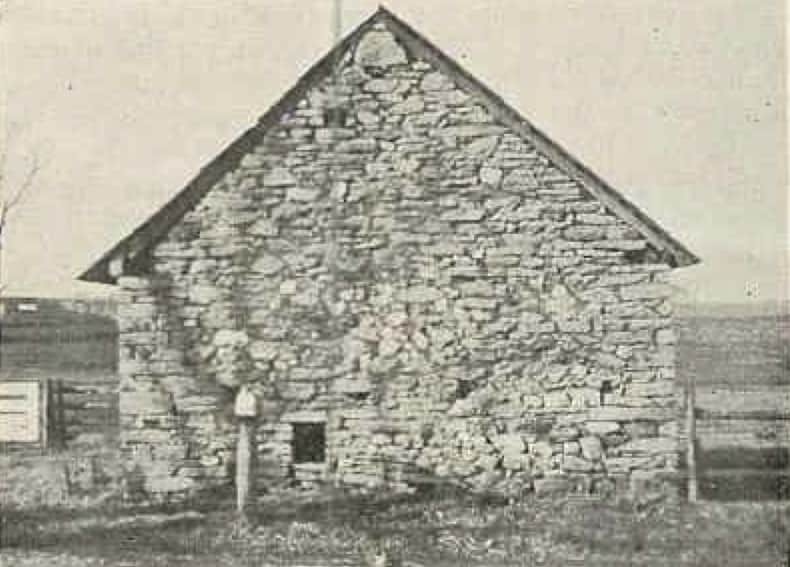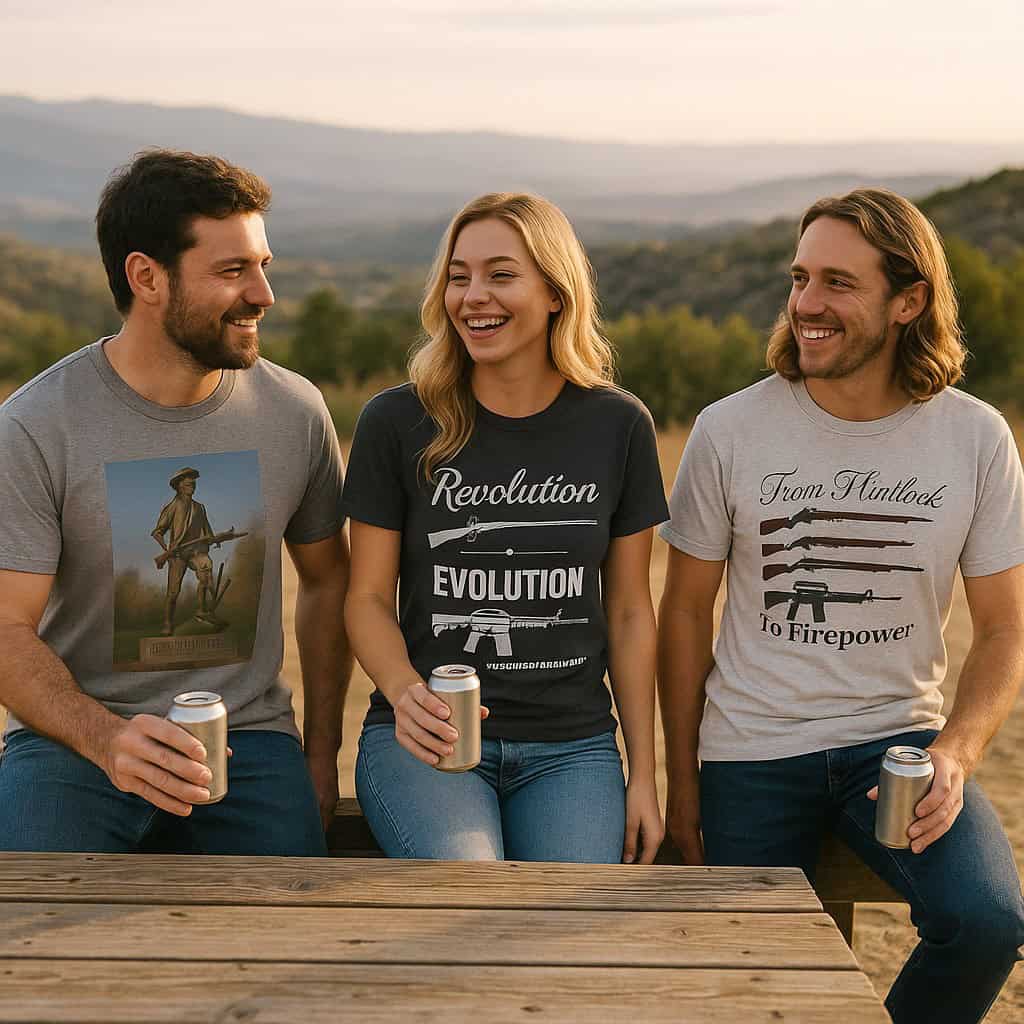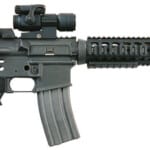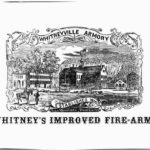
The Birth of an American Firearms Tradition
The history of firearms in America is deeply interwoven with the pioneering gunsmiths who established the foundation of American riflemaking. Among these early craftsmen, Martin Meylin stands as a key figure in the evolution of gunsmithing in Pennsylvania. While often associated with the development of the Pennsylvania long rifle (also known as the Kentucky rifle), Meylin's precise role in its invention is debated. However, his gunshop in Lancaster County, Pennsylvania, established around 1719, is widely recognized as one of the earliest gunsmithing operations in colonial America.
This article explores the true history behind Martin Meylin's Gunshop, his contributions to firearm development, the evolution of the Pennsylvania long rifle, and the broader context of gunsmithing in early America.
Martin Meylin: The Early Years and Establishment of His Gunshop
Martin Meylin was a Swiss immigrant and Mennonite craftsman who settled in Lancaster County, Pennsylvania, in the early 18th century. His arrival coincided with a period when European immigrants, particularly those of German and Swiss descent, were bringing their firearm-making traditions to the American colonies.
In 1719, Meylin is believed to have established Martin Meylin's Gunshop in present-day Willow Street, Pennsylvania. This date is based on historical markers and property records indicating that he was producing firearms by that time. However, whether Meylin was the first to introduce rifling techniques or specialized stock designs remains a subject of scholarly debate.
Meylin’s craftsmanship was exceptional, and his gunshop produced firearms tailored to the needs of settlers. These early firearms included smoothbore muskets and, possibly, early iterations of what would later become the Pennsylvania long rifle. His work was part of a larger movement of early Pennsylvania gunsmiths, whose innovations ultimately shaped American riflemaking.
Firearms Produced at Martin Meylin's Gunshop
Martin Meylin's gunshop focused on producing firearms suitable for the frontier environment of early Pennsylvania. The exact styles and designs of the guns he crafted remain unclear due to the absence of surviving rifles bearing his name. However, given the trends of the period, it is likely that his shop produced:
- Flintlock muskets – Standard weapons for settlers and militia forces.
- Early rifled firearms – Though not conclusively attributed to Meylin, it is likely that his shop experimented with rifling, a practice already known in Europe.
- Transitionary rifles – The period saw the evolution of German Jaeger rifles into what would become the Pennsylvania rifle, featuring longer barrels, reduced calibers (.40 to .50), and improved rifling for greater accuracy.
The association between Martin Meylin and the Pennsylvania long rifle is largely based on tradition rather than definitive historical evidence. The Pennsylvania rifle as it is known today took shape closer to the mid-to-late 18th century, influenced by later gunsmiths such as Jacob Dickert, Andreas Albrecht, and Christian Oerter.
The Evolution of the Pennsylvania Long Rifle
One of the most significant advancements in American firearms history was the transformation of European Jaeger rifles into what became known as the Pennsylvania or Kentucky rifle. This firearm, characterized by its long barrel (over 40 inches), smaller bore size, and superior rifling, provided increased range and accuracy—essential for hunting and self-defense in the wilderness.
Key innovations of the Pennsylvania rifle included:
- Longer barrels – Extending up to 44 inches or more, allowing for greater precision and velocity.
- Smaller calibers – Reducing the bore from .60-.75 caliber (standard for European muskets) to .40-.50 caliber, which improved efficiency and extended ammunition supply.
- Rifled barrels – Introducing spiraled grooves to stabilize the bullet, increasing accuracy at longer distances.
- Distinctive stock designs – Featuring elegant, curved wooden stocks with decorative carvings and inlays, often incorporating a patchbox for storing greased patches.
While Martin Meylin’s exact role in these innovations remains unclear, Martin Meylin's Gunshop contributed to the early tradition of riflemaking in Pennsylvania, helping lay the groundwork for the Lancaster School of gunsmithing.
Gunsmithing in 18th-Century Pennsylvania
Pennsylvania became a hub for gunsmithing in colonial America due to the high demand for firearms among settlers and frontiersmen. Gunsmiths in the region developed new techniques and refined their craft, leading to the emergence of distinct schools of riflemaking:
- Lancaster School – The most influential, producing sleek, highly accurate long rifles that would become a staple of American frontier life.
- Berks County School – Known for its ornate carvings and detailed brass inlays.
- Lehigh Valley School – Characterized by slim stocks and high-quality wood craftsmanship.
By the mid-18th century, Pennsylvania gunsmiths were exporting their rifles across the colonies, with their firearms becoming indispensable tools during the French and Indian War (1754-1763) and the American Revolution (1775-1783).
Martin Meylin’s Legacy and Historical Significance
Despite limited direct documentation, Martin Meylin remains an important figure in early American firearms history due to his role in Pennsylvania’s gunsmithing tradition. His legacy endures through:
- His contributions to early firearm production in Lancaster County – helping to establish the area as a center for gunmaking.
- The evolution of American riflemaking – though he did not single-handedly invent the Pennsylvania rifle, Martin Meylin's Gunshop was part of the broader movement that led to its development.
- Cultural and historical recognition – His name remains linked to the earliest recorded gunsmithing efforts in Pennsylvania, and his shop’s location is recognized by historical markers.
While Martin Meylin was likely not the sole inventor of the Pennsylvania long rifle, his contributions to early gunsmithing laid the foundation for later generations of master craftsmen. The rifles that emerged from Pennsylvania would go on to shape American marksmanship, frontier life, and military history.
Conclusion
Martin Meylin's Gunshop represents an early milestone in the history of American firearms. Whether or not Meylin personally crafted the first Pennsylvania long rifle, his role as a pioneer of early American gunsmithing is undeniable. Martin Meylin's Gunshop helped establish Lancaster County as a center for rifle production, and his contributions played a part in the broader transformation of firearm technology in the New World.
The Pennsylvania long rifle, developed through the efforts of many gunsmiths over several decades, became an iconic symbol of American ingenuity, independence, and marksmanship. While Meylin’s direct contributions remain debated, his place in early American gunsmithing history is firmly secured.
The legacy of Martin Meylin and Martin Meylin's Gunshop lives on in the enduring craftsmanship of Pennsylvania gunsmiths, whose work shaped the firearms that played a pivotal role in American history, warfare, and frontier expansion.
Read more about the Pennsylvania Rifle here:
Millersville University excavated the site of Martin Meylin's Gunshop. Read more about it here.
If you know of any forums or sites that should be referenced on this listing, please let us know here.





